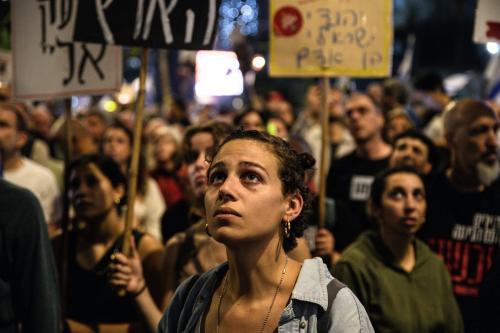Concern is rising over the situation in eastern Ukraine, with reports of increased shelling across the line of contact and rising casualties, as well as of Russia arming and organizing separatist forces while assembling regular army units along the Ukraine-Russia border. Tension is up, but the most likely prospect is continuation of a no war/no peace situation … a frozen conflict.
The Minsk II ceasefire—brokered between Ukraine and Russia by German Chancellor Angela Merkel on February 12—remains fragile at best. Shelling between Ukrainian and separatist/Russian forces never ceased entirely. Periodically, including now, it spikes up. All heavy weapons have not been withdrawn, something that should have taken place by the end of February.
Undoubtedly, both sides commit ceasefire violations. But reports by the Organization for Security and Cooperation in Europe (OSCE) monitoring mission more often attribute shelling to the separatist/Russian side. They also indicate problems gaining access to areas of separatist-controlled Donetsk and Luhansk, suggesting there may be things the separatists do not wish OSCE observers to see.
If the Minsk II ceasefire is tottering, what comes next? One can see three broad scenarios.
First, Minsk II succeeds, and peace takes hold, followed by implementation of the political and economic elements of the agreement. Ukraine restores sovereignty over the east, albeit with some devolution of authority to regional officials.
This is what the government in Kyiv says it wants—and what the European Union and White House fervently hope for. But there are few reasons for optimism. The political and economic elements of the agreement have fared little better than the ceasefire. Moreover, Alexander Zakharchenko, leader of the “Donetsk People’s Republic,” has ruled out Kyiv restoring sovereignty over eastern Ukraine and has said the separatists should occupy all of Donetsk Oblast.
Second, Minsk II breaks down completely, and large-scale hostilities resume. The Russian military has maintained a presence in eastern Ukraine, training up separatist fighters and providing overall command-and-control—to the point where the State Department now refers to “combined Russian-separatist forces.” Those forces give the Kremlin options. And Russian President Vladimir Putin likes to have options.
But does Moscow want to launch a new offensive? That would mean more costs, including dead soldiers, for the Russian army. If the Russian-separatist forces occupy new territory, they could well find a hostile populace and need to deal with a partisan campaign.
Beyond that, a new offensive would trigger further Western sanctions. The Kremlin clearly does not want that and appears to hope that the European Union (EU) will not renew sanctions in July. Merkel has done her best to preconfigure a decision to extend EU sanctions, but the possibility, however thin, of ending them this summer gives Moscow an incentive not to rock the boat.
A collapse of the ceasefire cannot be ruled out. Putin could make a different choice; he has surprised everyone before. And even if neither side wishes a resumption of large-scale fighting, the continued shelling creates the potential for escalation due to miscalculation. A breakdown of Minsk II thus has to be ranked as more probable than the agreement’s success.
The third and most likely scenario is a continuation of the current situation of no war/no peace … a frozen conflict. The ceasefire holds in some places, but not all. Shelling and fighting continue in certain locales, but no major offensive. Discussions in the Contact Group between representatives of Kyiv, the separatists, Russia and the OSCE take place every so often, but no breakthroughs to stabilize a settlement.
In contrast to Crimea, which Moscow quickly annexed, the Kremlin appears to regard eastern Ukraine and the conflict there as a means to destabilize the Ukrainian government and make it harder for Kyiv to address a difficult reform agenda or draw closer to the European Union. Kyiv finds itself in difficult straits right now. Moscow may see no need to sow further havoc. Should the Ukrainian government make progress, the Russians can ratchet up military pressure.
For its part, a frozen conflict in eastern Ukraine may not be unwelcome in Kyiv. It would allow the government time to get its financial house in order and tackle a long list of reforms. And the Ukrainian government may not want to take on economic responsibility for the separatist-controlled parts of Donetsk and Luhansk—which Minsk II mandates it do before regaining sovereignty. Kyiv may instead prefer to push that costly economic burden on Moscow.
So, for the foreseeable future, don’t bet on peace (unfortunately). Don’t be totally surprised if large-scale hostilities break out. But expect more of what we have seen the past two months.


Commentary
What’s next in eastern Ukraine? More of the same.
May 7, 2015